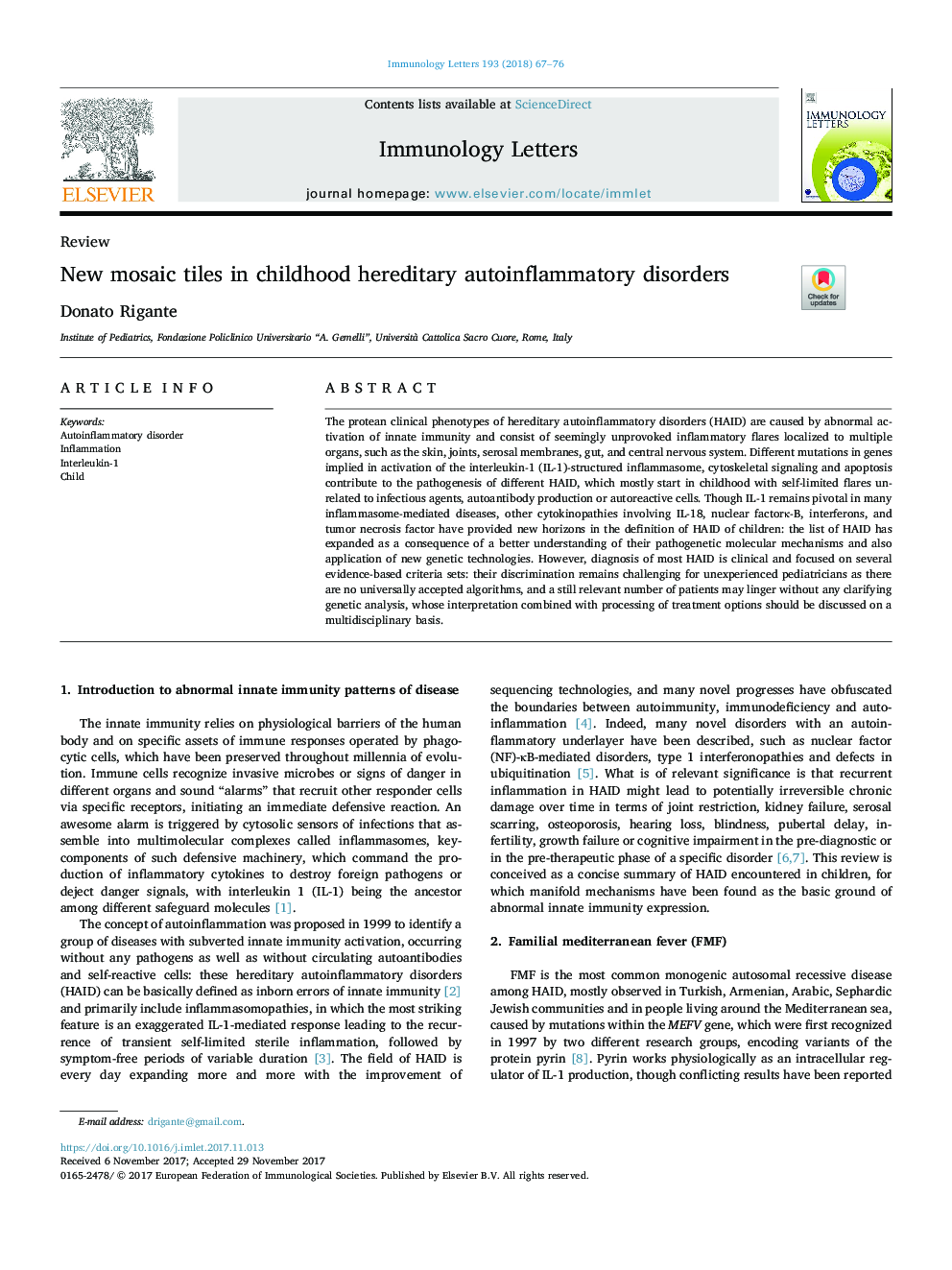| کد مقاله | کد نشریه | سال انتشار | مقاله انگلیسی | نسخه تمام متن |
|---|---|---|---|---|
| 8738392 | 1591533 | 2018 | 10 صفحه PDF | دانلود رایگان |
عنوان انگلیسی مقاله ISI
New mosaic tiles in childhood hereditary autoinflammatory disorders
ترجمه فارسی عنوان
کاشی های موزاییک جدید در اختلالات عودتناپذیری ارثی دوران کودکی
دانلود مقاله + سفارش ترجمه
دانلود مقاله ISI انگلیسی
رایگان برای ایرانیان
کلمات کلیدی
اختلال التهابی التهاب اینترلوکین-1، کودک،
موضوعات مرتبط
علوم زیستی و بیوفناوری
ایمنی شناسی و میکروب شناسی
ایمونولوژی
چکیده انگلیسی
The protean clinical phenotypes of hereditary autoinflammatory disorders (HAID) are caused by abnormal activation of innate immunity and consist of seemingly unprovoked inflammatory flares localized to multiple organs, such as the skin, joints, serosal membranes, gut, and central nervous system. Different mutations in genes implied in activation of the interleukin-1 (IL-1)-structured inflammasome, cytoskeletal signaling and apoptosis contribute to the pathogenesis of different HAID, which mostly start in childhood with self-limited flares unrelated to infectious agents, autoantibody production or autoreactive cells. Though IL-1 remains pivotal in many inflammasome-mediated diseases, other cytokinopathies involving IL-18, nuclear factorκ-B, interferons, and tumor necrosis factor have provided new horizons in the definition of HAID of children: the list of HAID has expanded as a consequence of a better understanding of their pathogenetic molecular mechanisms and also application of new genetic technologies. However, diagnosis of most HAID is clinical and focused on several evidence-based criteria sets: their discrimination remains challenging for unexperienced pediatricians as there are no universally accepted algorithms, and a still relevant number of patients may linger without any clarifying genetic analysis, whose interpretation combined with processing of treatment options should be discussed on a multidisciplinary basis.
ناشر
Database: Elsevier - ScienceDirect (ساینس دایرکت)
Journal: Immunology Letters - Volume 193, January 2018, Pages 67-76
Journal: Immunology Letters - Volume 193, January 2018, Pages 67-76
نویسندگان
Donato Rigante,
